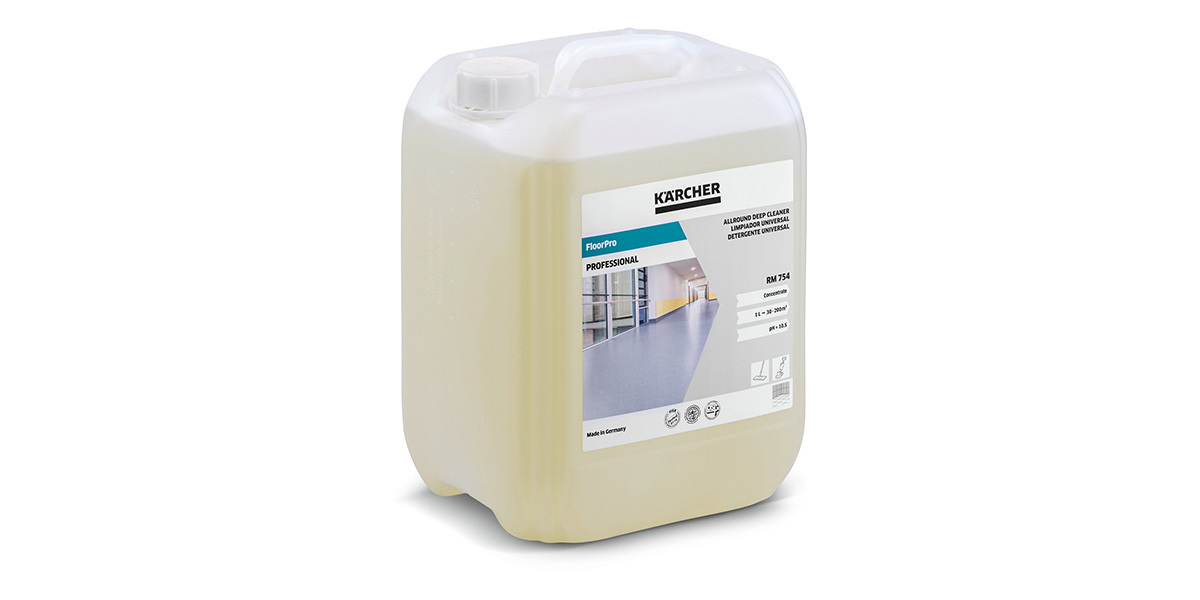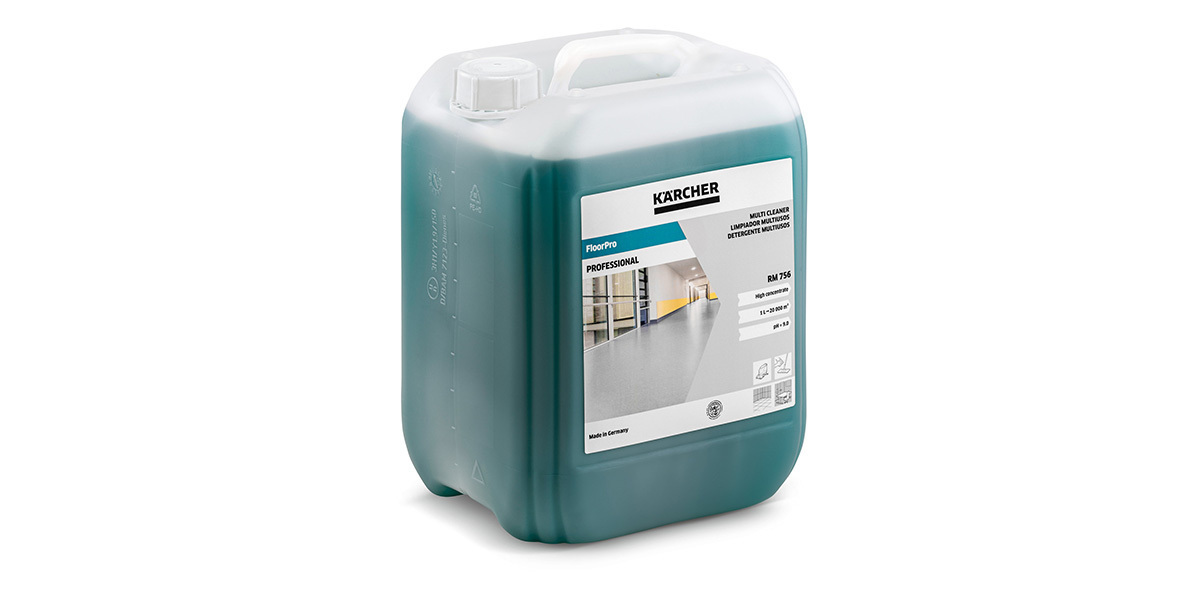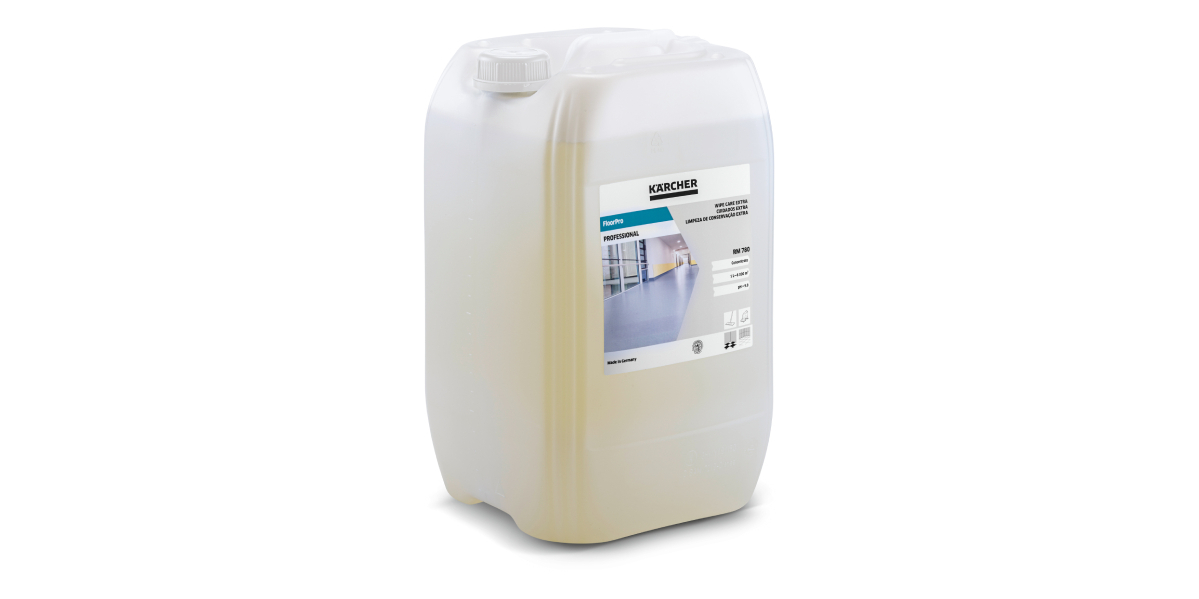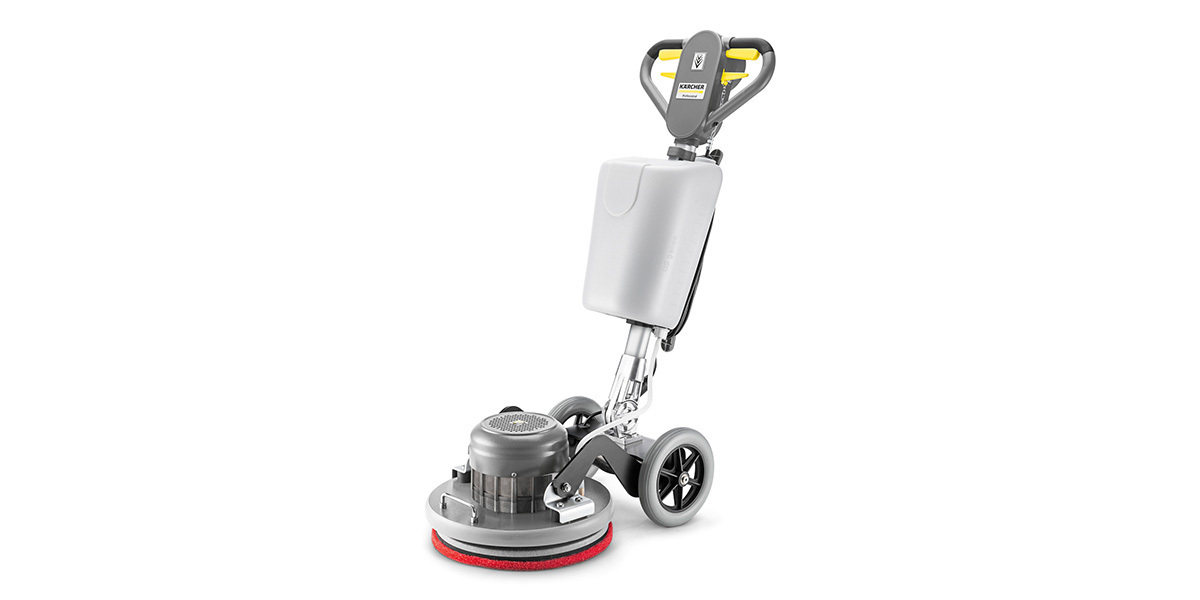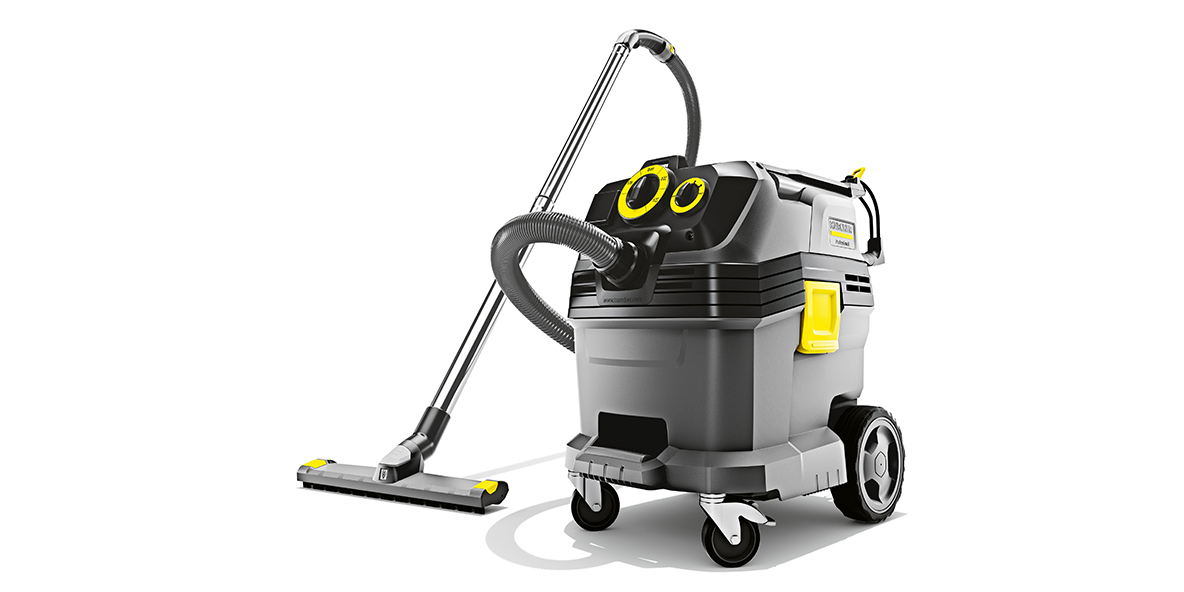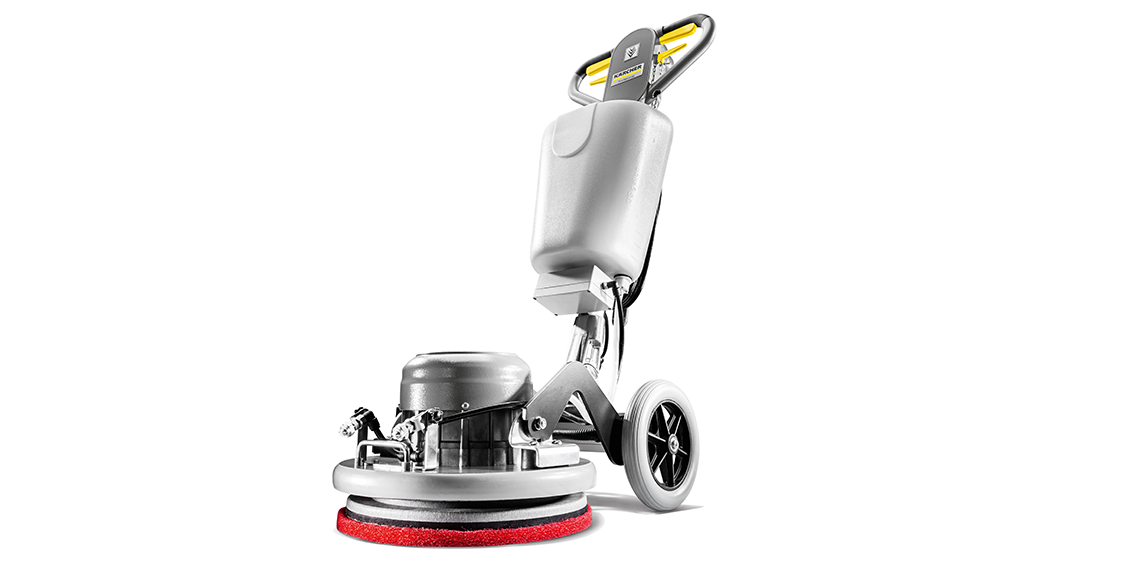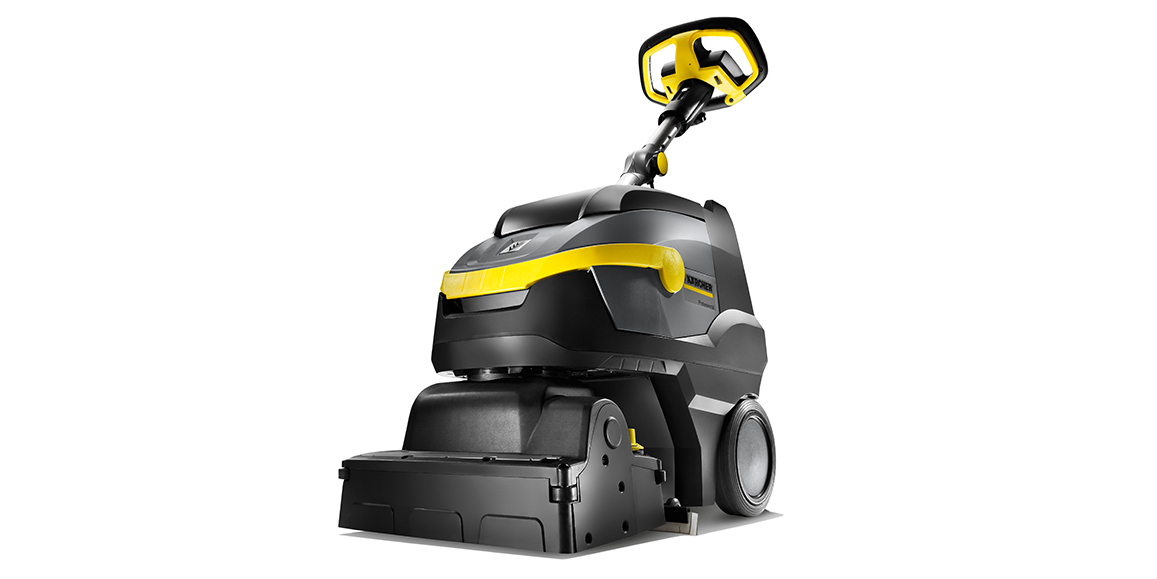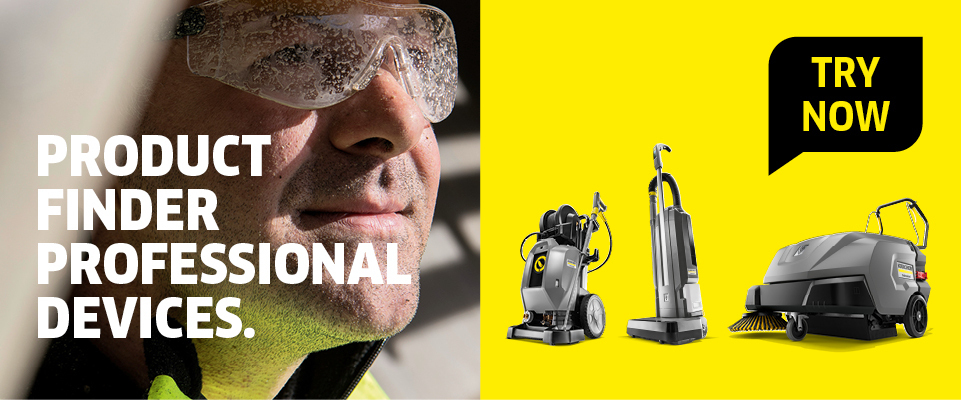Cleaning resilient floor coverings
Public buildings such as hospitals, care homes, schools or gyms often have resilient floor coverings. These require professional cleaning, not only for hygienic and aesthetic reasons, but also to ensure the longest possible service life. What methods are there for maintenance cleaning and intermediate cleaning? What is top stripping and protective coating restoration all about? And when does it make sense to perform a chemical deep clean and when a full-surface re-treatment? Find out about the different methods, depending on the material and type of soiling, and the significance of a paper clip.
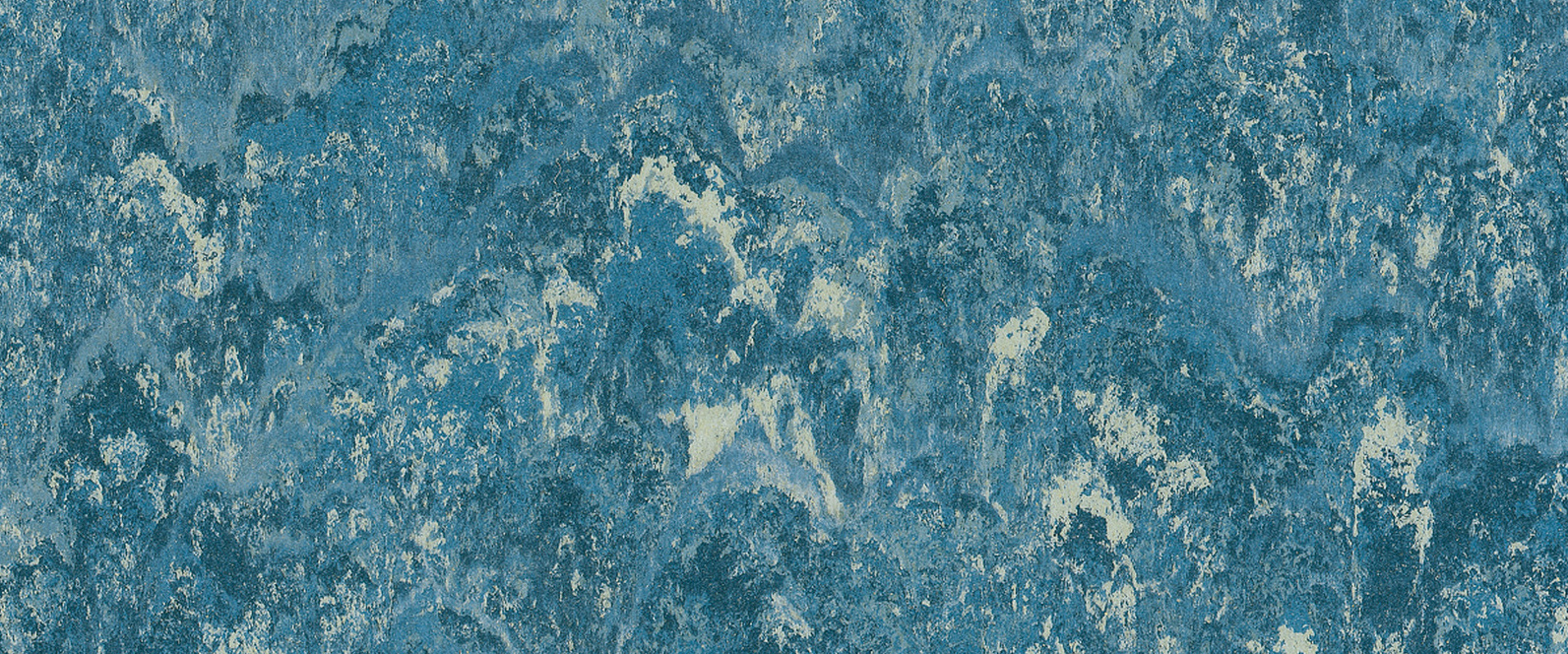
Know your floor: assess its condition, select the right method
In order to select the right cleaning method and a compatible detergent, the floor must first be inspected. The most important step at this point is to find out which type of floor covering is being dealt with – and what is compatible with it.
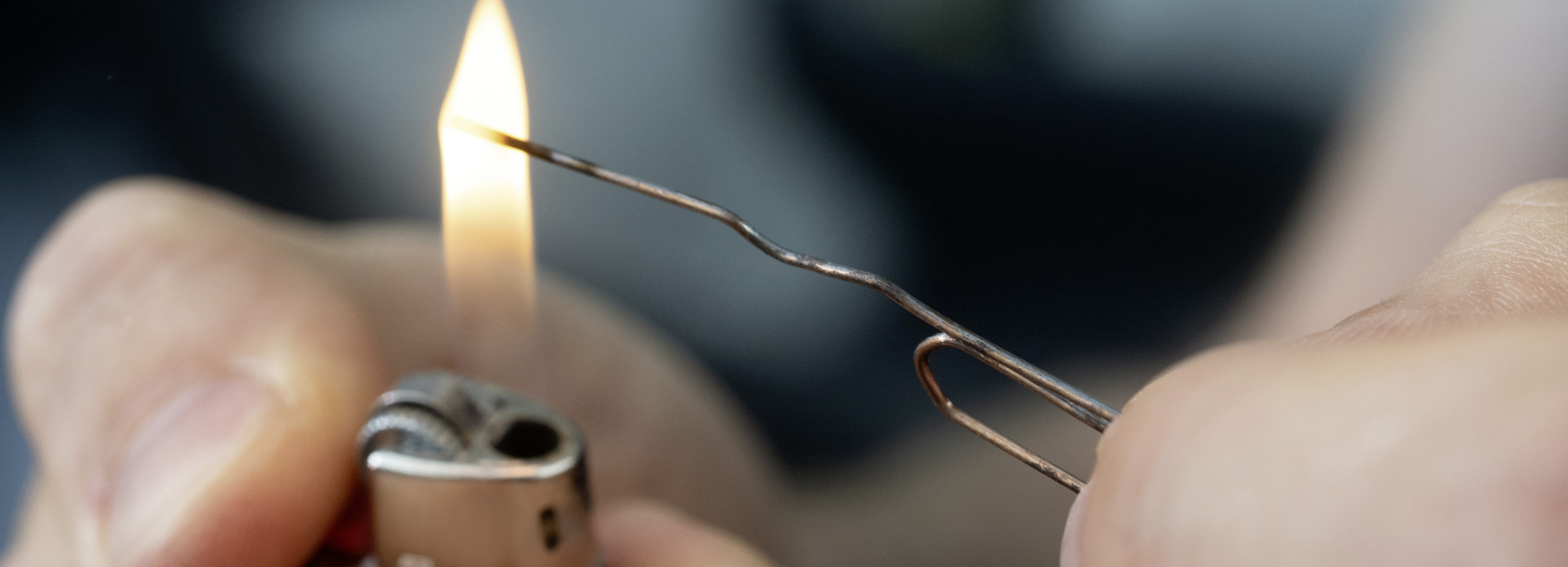
What PVC and the like are made from and what they are compatible with
PVC (also known as polyvinyl chloride or simply vinyl) is a synthetic floor covering that is highly resilient and resistant to water and alkalis. Linoleum, on the other hand, is a natural product consisting of linseed oil, ground cork, wood flour and a jute backing. This material is only alkali-resistant under certain conditions (pH value of the application concentration max. 9.5). Elastomer floor coverings are primarily made of synthetic/natural rubber. This floor covering is sensitive to the long-term effects of highly alkaline detergents and should only be cleaned using products with a maximum pH value of 10.
Identifying the material with a paper clip
To select the right cleaning method and detergent, it is important to refer to the cleaning and care instructions. If these are not available, a simple metal paper clip can help to distinguish between PVC/vinyl, elastomer and linoleum. How it works: straighten out a paper clip and heat the tip for roughly five seconds with a lighter then push it into the floor in an inconspicuous place for approximately three seconds.
Tip – Test the material:
Most radiators have a pipe collar that can be lifted up. Underneath here makes a good spot to test the material.
In the case of PVC (vinyl), the hole formed by the paper clip reaches almost to the base of the flooring and a thin thread forms when the metal tip is pulled out. A hard bulge can clearly be seen and felt at the site of the hole and a strong smell of burning plastic is released. With linoleum, on the other hand, the puncture site remains smooth and charring or burn marks appear, combined with a woody linoleum smell. With elastomer floor coverings, the paper clip hardly penetrates the floor; a hole is formed with no bulge and there is a smell of burnt rubber. Once the material has been identified, cleaning can begin.
Which method for which floor?
The right techniques and maintenance measures vary depending on the floor type in question. If it is a coated floor, then chemical wet floor cleaning is only advisable if the coating is severely damaged down to the base. In the case of linoleum or PVC/vinyl, protective coatings can be restored to remove traces of use, such as well-trodden tracks. If the flooring still has several layers of protective coating, which are not damaged down to the base, top stripping is advisable for these materials. With elastomer floors, by contrast, coating is often not necessary at all and application of a wipe care product with a spray cleaner is sufficient.
Regular maintenance cleaning is half the job
Regular maintenance cleaning is necessary not only for the cleanliness, appearance and longevity of the floor covering, but also to extend the intervals between deep cleans.
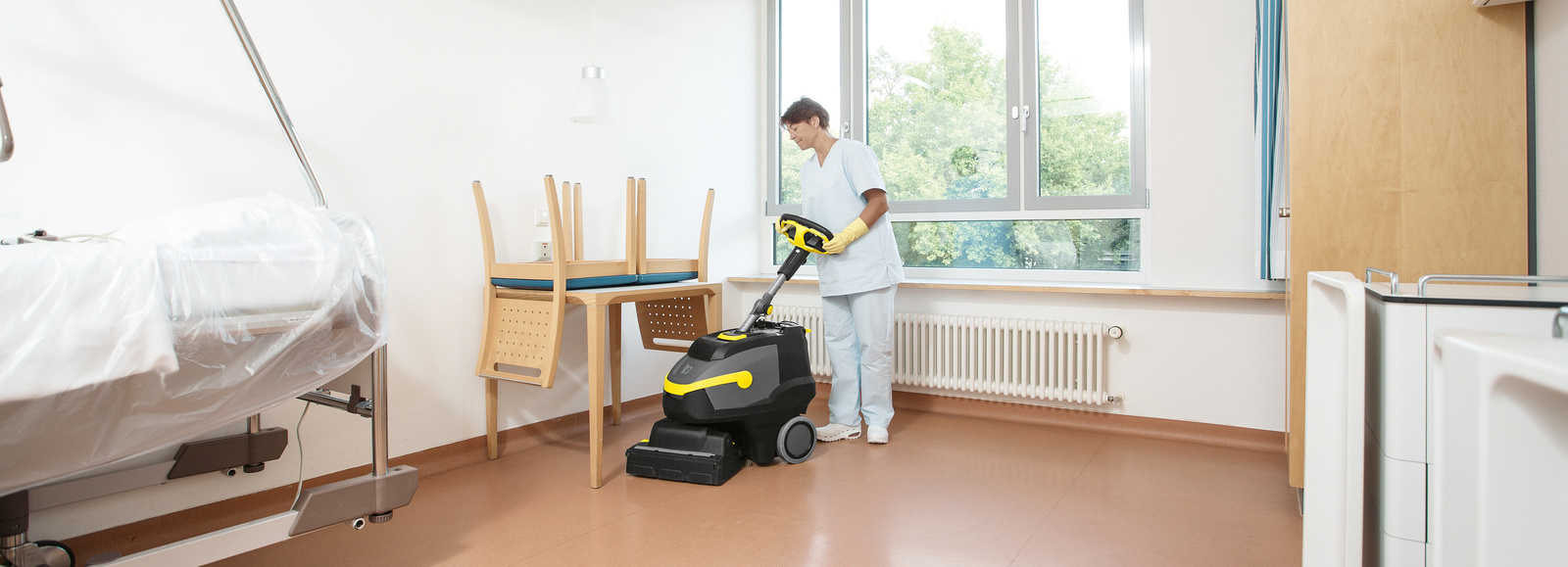
Dry first, wet second
Firstly, loose dirt must be removed with a vacuum cleaner. Manual sweeping with a broom is not recommended, as this only stirs up the dust and spreads it around the room.
This is then followed by wet cleaning with a pH-neutral detergent. Mopping is often done manually, although better results are achieved faster using a scrubber dryer. Since it simultaneously vacuums water back up, the drying time is faster and the floors can be walked across sooner. An added benefit: more thorough cleaning also delays the need for the next time-consuming deep clean.
It's all in the details (1): wet cleaning of smooth floors
Smooth floors such as linoleum are easy to clean. Please note, however, the pH value of the detergent must not exceed 9.5 to prevent saponification, i.e. irreparable damage. If a machine is used to clean the floor, a model with a disc brush achieves good results on smooth floors provided the soiling is not too heavy.
A model with a roller brush generally cleans even more effectively on textured floor coverings, due to the targeted and higher contact pressure of the roller. If only ever mopped by hand, an unattractive greying effect can develop over time, as the dirt is often just spread around.
It's all in the details (2): wet cleaning of textured floors
Manual cleaning reaches its limits, especially when mopping textured floors such as vinyl coverings, because surfactants, dirt and polymers are stripped off the grooves and grain of the floor covering, while the dirt is deposited in the indentations. Plus, when surfactants are left behind, dirt builds back up faster. A scrubber dryer with a soft roller brush, on the other hand, penetrates into the indentations, removes the dirt and the dirty water is efficiently vacuumed up in a single work step. Elastomer or rubber floors with studs, which are often laid in nurseries, gyms or indoor play areas, are also better cleaned by machine for the same reasons. A roller brush with a smaller contact area and more targeted pressure penetrates the indentations better than manual tools or disc brushes. An added benefit of the roller machine is that the coarse dirt sweeper drawer also picks up any loose dirt left behind.
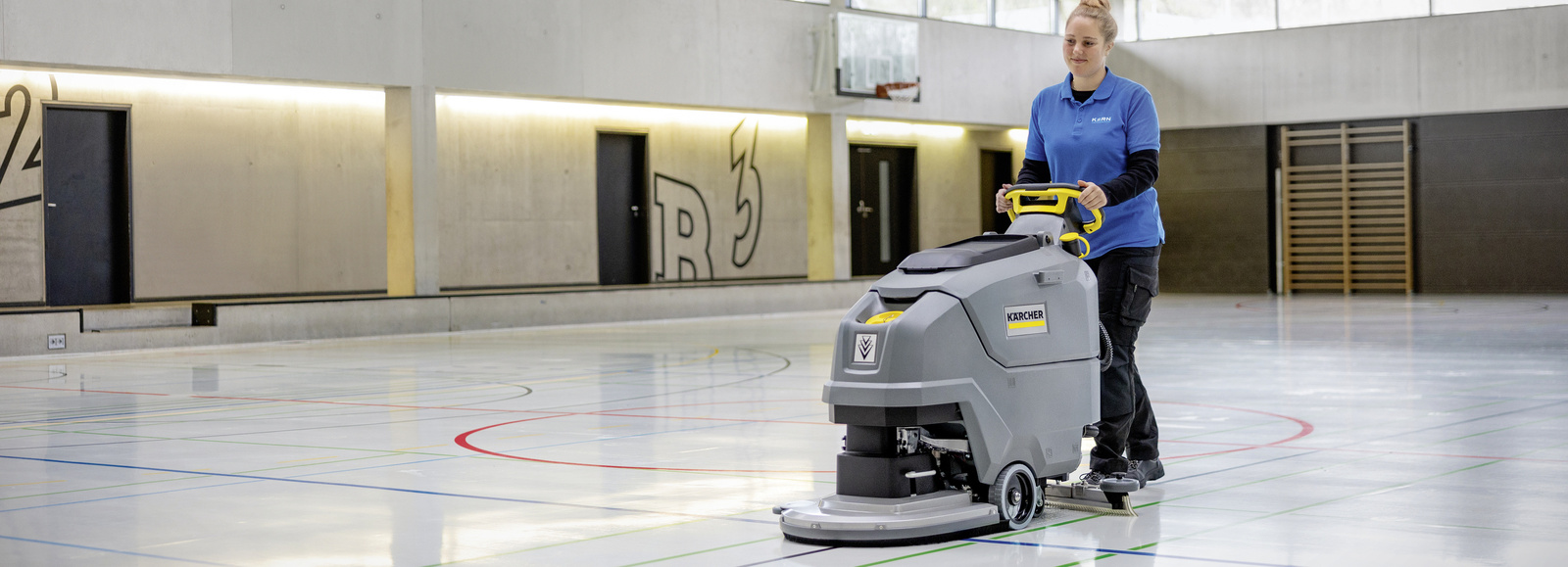
Tip 1 – Give sports halls the care they need:
In sports halls, only care agents that are sufficiently anti-slip in accordance with DIN V 18032-2 may be used on elastomer floor coverings.
Tip 2 – Coating and wipe care products:
Sports hall floors place higher demands on cleaning and maintenance teams, because they have specific functional properties, such as reflecting balls or absorbing movement. The wipe care product needs to be compatible with the type of coating.
Intermediate cleaning for more shine
There are efficient, labour-saving, cost-saving and environmentally friendly cleaning methods available to delay the need for a deep clean. Which technique is advisable and what are top stripping and protective coating restoration?
Technique 1: more mechanical action
Dirt that is difficult to remove, such as marks left by the soles of shoes, is best tackled with a scrubber dryer. When used in combination with a blue pad for more mechanical action and a powerful intensive cleaner, the unsightly marks quickly disappear from sports hall floors and more besides. Alternatively, the rubber wear can also be removed by dry methods, using a polishing machine (1,500 rpm) and a hog hair polishing pad.
Technique 2: top stripping
Top stripping is a fast, eco-friendly and cost-effective method for restoring the entire surface of a floor covering's coating without the need for a wet deep clean with chemicals. Another benefit is the shorter drying time for linoleum, since the protective coating remains intact and no water penetrates the flooring. A prerequisite for this method is an intact protective coating of four to five layers, which has no gaps or holes anywhere down to the base. How is this done? Superficial signs of wear in the protective coating are ground down using a single-disc machine or scrubber dryer – preferably with an orbital wheel head and oscillating motions – while also adding clean water. The water binds with the grinding dust, and the mixture is then vacuumed straight back up by the scrubber dryer. Hard-to-reach areas can be treated with a hand pad or a small handheld disc machine. Once the entire coating has a uniform matt finish and is free of dirt deposits, the new protective coating is applied.
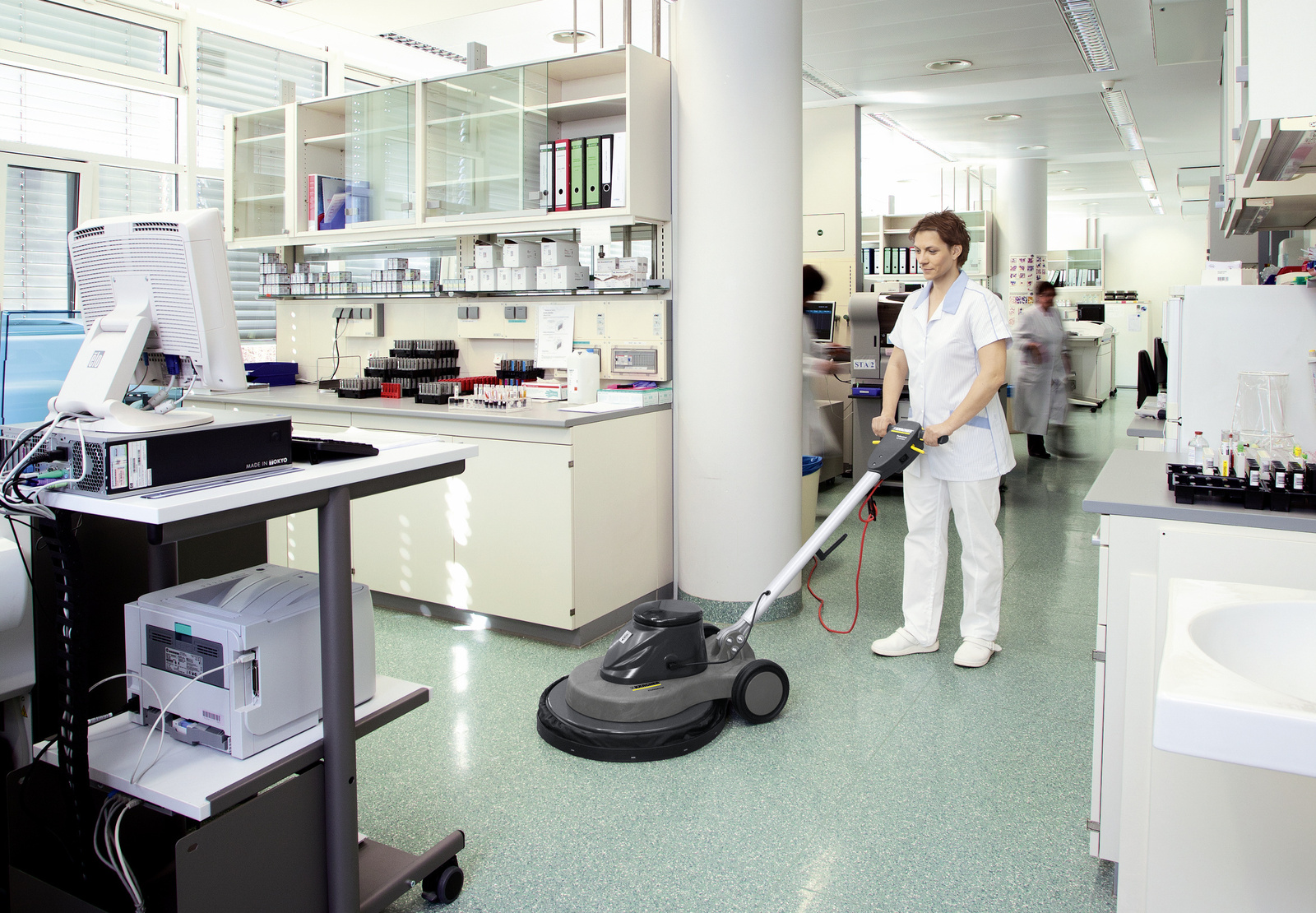
Technique 3: protective coating restoration
If only partially worn areas of protective coating need to be refurbished, as is the case with well-trodden tracks, protective coating restoration provides the desired result quickly and with little work. Intact areas of the protective coating remain untouched, which means the rooms do not have to be completely emptied and normal business operations can resume after a short time. Another advantage is that no cleaning chemicals are required.
How is it done? Loose and ingrained dirt are removed first, then the affected area is partially sanded with a heavy-duty, powerful single-disc machine including suction unit and SPP pad (surface preparation pad). Any remaining sanding marks are removed with a dust-binding wipe, the coating can be applied to the sanded area in one or two overlapping layers.
After roughly one or two hours drying time, the attachment points are levelled with the single-disc machine and a blue pad. Once all affected areas have been restored, the entire surface can be polished with a red or beige disc pad to give the floor covering an even shine.
Tip 1 – Use the same coating product:
The same coating product should be used for every refurbishment, otherwise the new coating may not stick.
Tip 2 – Protective coating restoration:
Here too, the coating applied should be the same product as is already present on the flooring.
Tip 3 – Make the floor shine:
Elastomer is the champion athlete of floor coverings and often requires no additional protective coating. However, a wipe care product can be applied with a spray cleaner to make the floor shine. Afterwards, the surface should be polished with a high-speed machine, a polishing machine or a roller scrubber with white, soft brushes or yellow roller pads.
Chemical wet deep clean
Even with regular deep cleaning and intermediate cleaning measures, there will eventually come a time when chemical wet cleaning is necessary. This removes old protective coatings that are worn down to their base, as well as all the dirt trapped in these. Although this method is time-consuming and more costly, it is necessary to completely renovate the floor covering if the protective coating is extensively worn.
Thorough preparation is everything
As always, it is important to follow the steps in the cleaning and care instructions. Underfloor heating should be switched off at least 24 hours in advance. It is best to remove all furniture from the room; if this is not possible, ensure the furniture is well protected. Adjacent areas must be masked off. If necessary, it may be helpful to make a sketch of the room in advance or take a photo so that everything can be returned to its original position later.
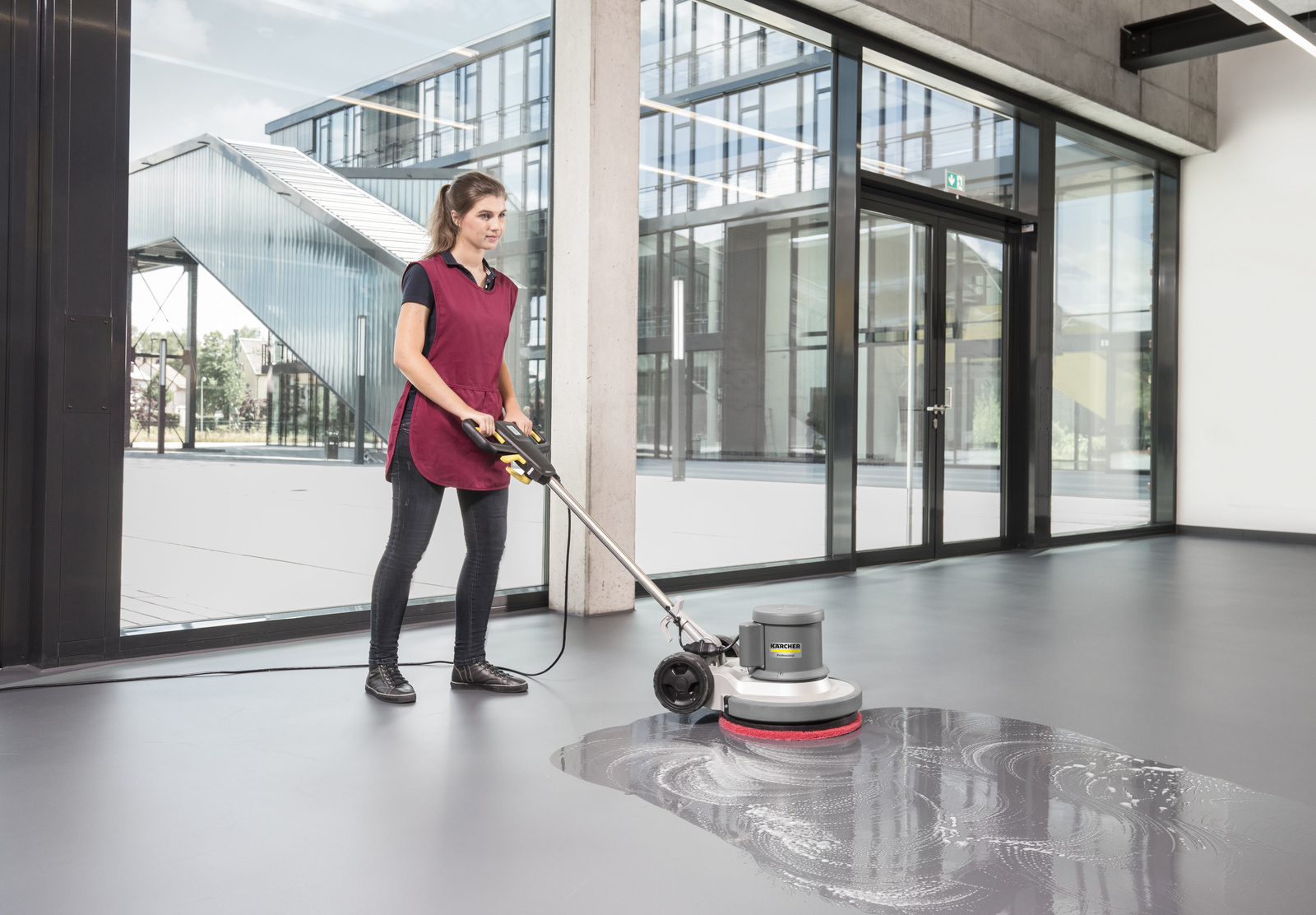
Technique and method for cleaning
To start, a suitable deep cleaning agent is dosed in the prescribed concentration. Then the cleaning water is applied in sections – either using a machine or a flat mop – and left to work for approx. ten minutes. A scrubber dryer is then passed over the floor covering. If a single-disc machine is run at a low speed (150–180 rpm), this is done using green disc pads in uniform, overlapping circles; if using roller technology, a criss-cross motion is used. Machines with roller technology also make it easy to clean textured and uneven floors. Important: The deep cleaning agent must not be allowed to dry during application, which is why it is necessary to work in sections. Edges and hard-to-reach areas can be treated with the hand pad.
All the dirty water can then be vacuumed up quickly and efficiently with a wet-dry vacuum cleaner or a scrubber dryer. Then, the floor is rinsed with clean water. Important: The prescribed drying time must be observed, which varies depending on the type of floor covering – for linoleum this is at least 12 to 24 hours.
Once the floor is completely dry, at least two to three layers of protective coating are applied to the floor. This protects the floor covering and makes subsequent maintenance cleaning easier. The coating agent should be well shaken before use and applied in puddles to the clean and dry floor covering. When spreading with a flat mop, work as evenly and carefully as possible. After 60 to 90 minutes, the next layer is applied. After 24 hours, the entire protective coating is fully cured and normal operation can resume.
Tip 1 – Use a rubber squeegee:
In order to check whether the coating has been fully removed, either a rubber squeegee or the suction nozzle of a wet-dry vacuum cleaner can be used to clear a test spot. If the floor covering here appears completely matt, with no shiny areas remaining, the protective coating has been successfully removed.
Tip 2 – Observe the drying time:
It is imperative the drying time is observed, because any residual moisture or surfactant have a powdering effect on the protective coating.
Suitable products for your area of application
Find a wide range of technology at lightning speed – with the Kärcher Professional product finder
In no time at all, we'll show you the exact Kärcher Professional machine that best suits your specific cleaning task.

